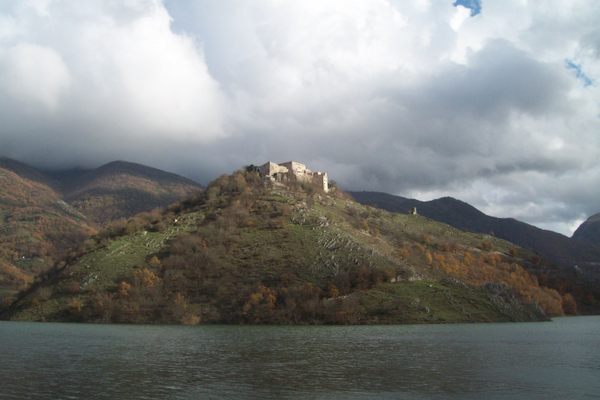About
Lying over 50 miles northeast of Los Angeles, in the eastern Antelope Valley, is a community named Lake Los Angeles. But Lake Los Angeles has no lake. Instead, the now-nonexistent lake is a remnant of the town's manipulative speculative real estate history.
Lake Los Angeles sits lakeless on the western edge of the Mojave Desert at an elevation of over 2,600 feet, feeling much closer to an eastern California desert town and much further from the metropolitan image evoked by the name Los Angeles.
Once called Wilsona after then-president Woodrow Wilson, and then Los Angeles Buttes, real estate speculators in the 1960s Antelope Valley development boom changed the name to Lake Los Angeles. They took a small natural lake formed in a basin around Lovejoy Spring and developed it into a larger pair of artificially filled lakes, one dedicated to fishing and one to recreational boating and swimming.
Along with the new lake and name came a new image, reinforced by advertising portraying the area as a resort destination and mentions of a country club and lakefront luxury lots. In reality, the mostly barren region of the High Desert had a history of being used for filming movies and television Westerns which capitalized on the area's sparse desert landscape, and the manmade lakes were only around 5 feet deep.
Of the initial 4,000-acre purchase, the real estate speculators subdivided the land into 4,465 lots. Many of these lots were purchased by buyers who had never actually visited the region. Eventually, the original speculators sold their interests in the town. With ongoing conflict within the community over the funding necessary to keep the artificial lakes filled, by the 1980s the lakes evaporated, leaving an empty basin surrounded by several of the area's buttes and some concrete ruins of the lake's infrastructure.
Currently, the town, which is part of the unincorporated area of Los Angeles County, has a population of around 13,000 and is predominantly a commuter base for those who work elsewhere. Nearby stand some of the tallest Joshua trees in Los Angeles County, along with several parks and wildlife sanctuaries, and a city park and community center have been built at the edge of the site of the lake and Lovejoy Spring, which has since run dry.
Several filming locations continue to offer their false building fronts and empty indoor spaces to those who want to take advantage of the area's colorful sunsets and mostly-unchanged dirt backroads winding amongst rock formations and sandy washes. The town of Lake Los Angeles, however, remains a quiet small community, the once-lakefront homes stand beside dusty paths used by dirt bikers and the concrete boat ramps now some of the available real estate used by amateur graffiti artists.
The original speculators are long gone, and those who live here today disagree about what direction to try to take the community. The water is gone, save for occasional flash floods across the desert floor. But sometimes, amongst the hot desert wind and dry washes, you can still ride your horse to the outskirts of town and see some film or advertising crew filming, using the area's barren and undeveloped hills as a picturesque and empty background before packing up and leaving Lake Los Angeles for more bustling home communities elsewhere.
Related Tags
Know Before You Go
It gets hot here, but sunrises and sunsets in the Antelope Valley are beautiful!
Published
September 14, 2016


































